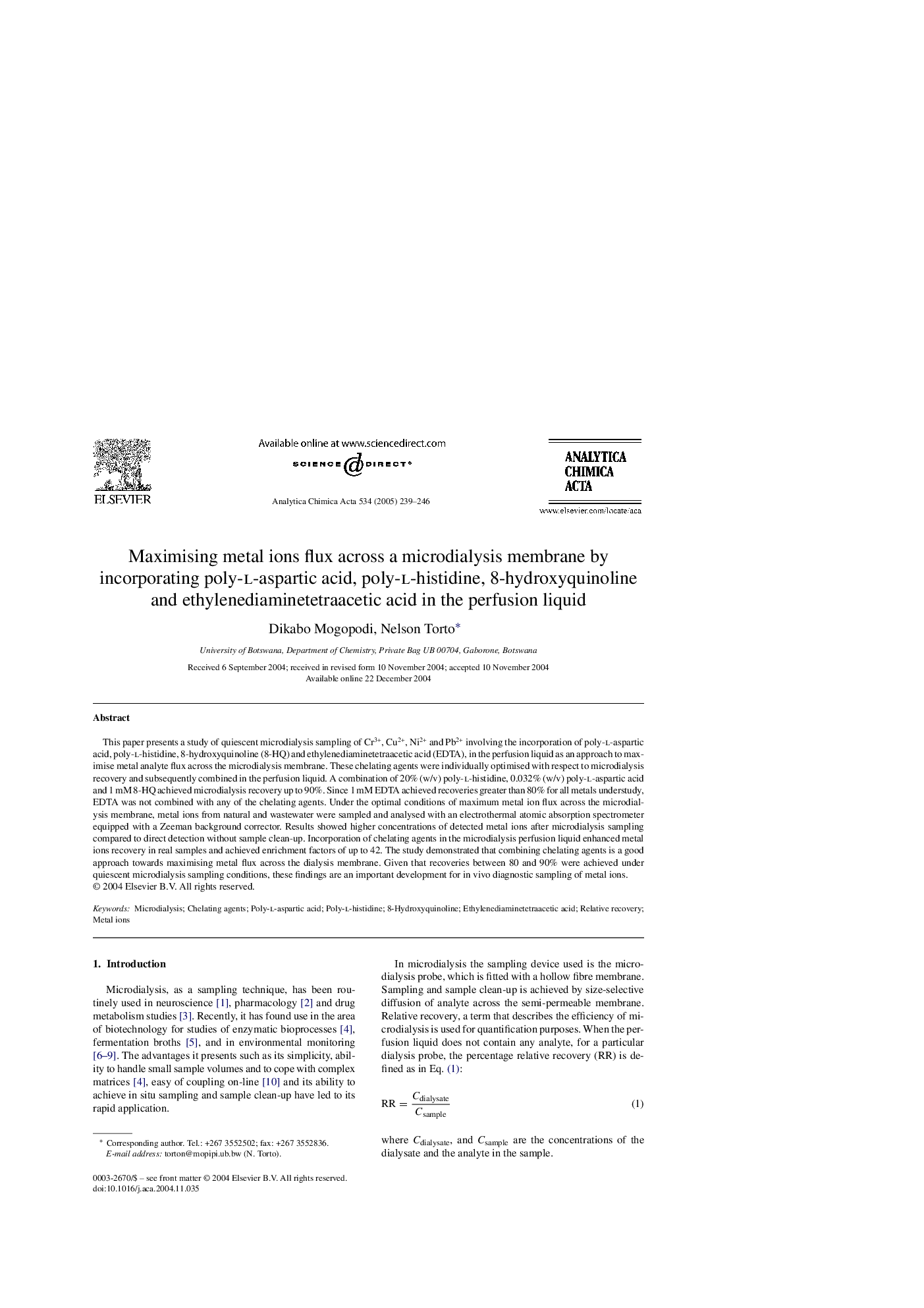| Article ID | Journal | Published Year | Pages | File Type |
|---|---|---|---|---|
| 10529277 | Analytica Chimica Acta | 2005 | 8 Pages |
Abstract
This paper presents a study of quiescent microdialysis sampling of Cr3+, Cu2+, Ni2+ and Pb2+ involving the incorporation of poly-l-aspartic acid, poly-l-histidine, 8-hydroxyquinoline (8-HQ) and ethylenediaminetetraacetic acid (EDTA), in the perfusion liquid as an approach to maximise metal analyte flux across the microdialysis membrane. These chelating agents were individually optimised with respect to microdialysis recovery and subsequently combined in the perfusion liquid. A combination of 20% (w/v) poly-l-histidine, 0.032% (w/v) poly-l-aspartic acid and 1Â mM 8-HQ achieved microdialysis recovery up to 90%. Since 1Â mM EDTA achieved recoveries greater than 80% for all metals understudy, EDTA was not combined with any of the chelating agents. Under the optimal conditions of maximum metal ion flux across the microdialysis membrane, metal ions from natural and wastewater were sampled and analysed with an electrothermal atomic absorption spectrometer equipped with a Zeeman background corrector. Results showed higher concentrations of detected metal ions after microdialysis sampling compared to direct detection without sample clean-up. Incorporation of chelating agents in the microdialysis perfusion liquid enhanced metal ions recovery in real samples and achieved enrichment factors of up to 42. The study demonstrated that combining chelating agents is a good approach towards maximising metal flux across the dialysis membrane. Given that recoveries between 80 and 90% were achieved under quiescent microdialysis sampling conditions, these findings are an important development for in vivo diagnostic sampling of metal ions.
Keywords
Related Topics
Physical Sciences and Engineering
Chemistry
Analytical Chemistry
Authors
Dikabo Mogopodi, Nelson Torto,
